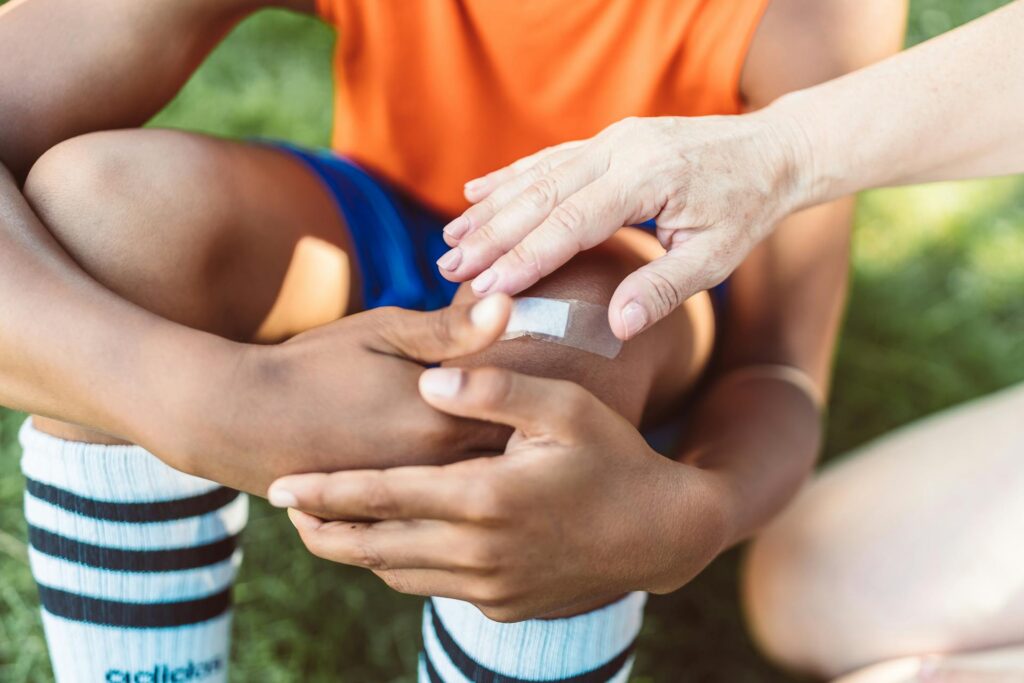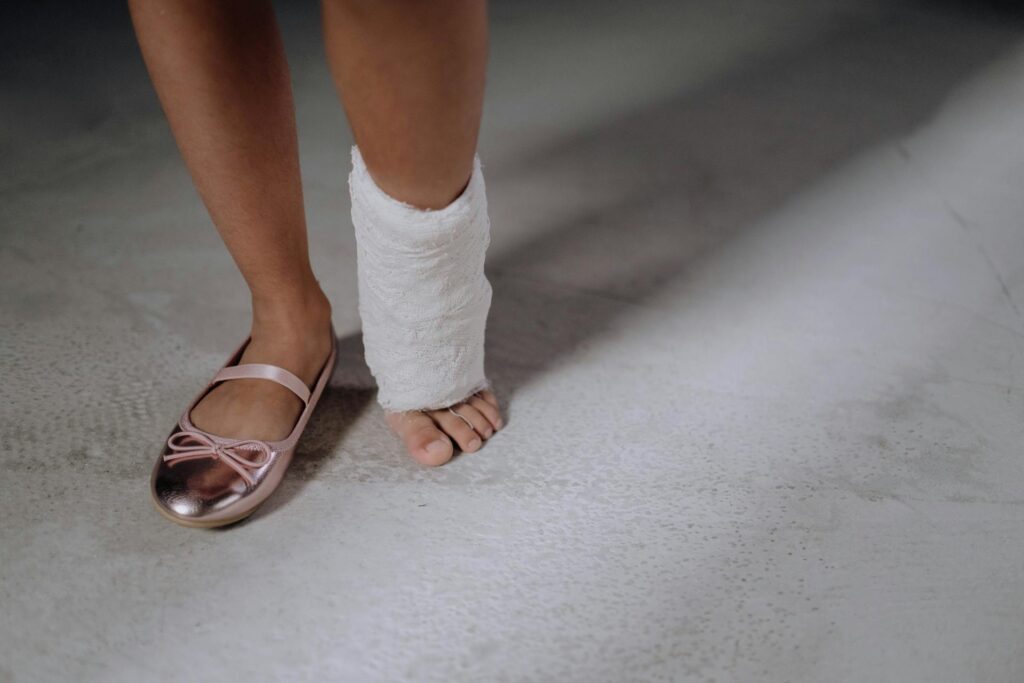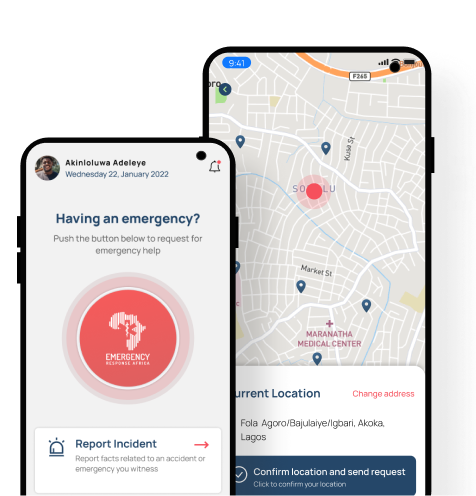Children are naturally active and curious, which makes them more prone to everyday injuries like cuts, burns, and falls.
While many of these accidents seem minor, some can quickly become serious if not handled properly. Sadly, over 1,600 children and teenagers around the world lose their lives every day due to injuries that could have been prevented, according to UNICEF.
First aid for children is a vital part of parenting. Every parent should know how to handle common situations like burns, bleeding, choking, or a bad fall. The goal isn’t to replace professional care, but to keep your child safe and stable until help arrives or the situation improves.
In this guide, we break down the essential first-aid steps parents should know, what to keep in your home kit, and how to stay prepared for emergencies involving children.
Why First Aid Knowledge is Essential for Parents
As a parent, you’re often the first person available to respond when your child gets injured. Knowing how to manage the situation calmly and correctly can help prevent complications and provide much-needed comfort while waiting for medical help.
Children’s bodies are still developing. Their airways are smaller, their skin is more delicate, and they can lose fluids or go into shock much faster than adults. This means first aid for children must be approached differently, with extra care and age-appropriate techniques.
In addition, children may not always explain what they’re feeling or how badly they’re hurt. It’s up to parents to observe signs, ask the right questions, and act quickly when something isn’t right. Having basic first aid knowledge means you can respond with clarity, avoid panic, and ensure your child gets the right support at the right time.
Simply put, every parent becomes a safer parent when they know what to do before professional help arrives.
Must-Have Items in a Child-Safe First Aid Kit
Every home with children should have a well-stocked first aid kit that’s easy to access in an emergency. Unlike general kits, a child-focused kit includes items tailored to their size, skin sensitivity, and common childhood injuries.
Here’s what your kit should contain:
- Adhesive bandages (various sizes) – For covering cuts, scrapes, and blisters. Choose gentle, hypoallergenic types suitable for sensitive skin.
- Antiseptic wipes or solution – To clean wounds and prevent infection.
- Digital thermometer – For checking your child’s temperature during fevers or illness.
- Tweezers and blunt-tip scissors – For removing splinters or cutting gauze safely.
- Sterile gauze pads and adhesive tape – To cover and protect larger wounds or burns.
- Saline solution: For eye rinsing or wound cleaning.
- Cold packs – To reduce swelling from bumps, bruises, or sprains.
- Child-safe pain relievers – Like paracetamol or ibuprofen (liquid or chewable form) with proper dosage instructions
- Oral rehydration salts (ORS) – Useful in cases of dehydration from vomiting or diarrhea.
- Burn ointment or gel – To soothe minor burns or scalds
- CPR face shield or mask – In case of breathing emergencies.
- Gloves and hand sanitizer – To maintain hygiene while giving care.
It’s also helpful to include any personal medications your child may need and keep emergency contact numbers handy.
Essential First Aid Skills for Parents

Having a first aid kit is important, but knowing how to use it matters even more. Parents should learn a few core techniques that can make a real difference in an emergency. These skills don’t require medical training, they just need practice and confidence.
CPR for Babies and Children
Cardiopulmonary resuscitation (CPR) helps restart breathing and circulation during cardiac arrest. For babies (under 1), use two fingers in the center of the chest and gentle breaths. For children, use one or both hands (depending on size) and slightly stronger breaths. Learn the rhythm and sequence through a certified course.
The Recovery Position
If your child is unconscious but breathing, gently place them on their side with their head tilted back slightly. This helps keep the airway open and prevents choking on vomit or saliva.
Choking Relief (Heimlich Maneuver)
For infants, give back blows and chest thrusts. For children, use abdominal thrusts just above the belly button. Always call for help if choking doesn’t stop quickly.
How to Spot and Manage Shock
Signs of shock include cold, clammy skin, rapid breathing, weakness, or confusion. Lay the child down, elevate their legs slightly, keep them warm, and call for emergency help immediately.
Handling Broken Bones or Sprains
Never try to straighten a limb. Support it with a soft item like a rolled towel or cloth, and avoid moving the child unnecessarily until medical help arrives.
Age-Appropriate Medication
Know the safe dosages of paracetamol or ibuprofen for your child’s weight and age. Always read labels and use proper measuring tools (not kitchen spoons).
“You can learn these skills by taking our First Aid and CPR training. We offer practical, parent-focused sessions designed for real-life home emergencies.”
Quick First Aid Guide for Common Childhood Emergencies
The table below outlines some of the most common situations parents may face, what to look out for, and simple first aid steps you can take to keep your child safe and stable.
| Emergency | Common Signs | First Aid Actions | |
| 1 | Bleeding (Cuts/Grazes) | Visible blood, crying, pain, open wound | Apply gentle pressure with sterile gauze |
| Clean with antiseptic | |||
| Cover with a bandage | |||
| 2 | Choking | Coughing, difficulty breathing, bluish lips, inability to speak or cry | Encourage strong coughing if they can |
| Give back blows & chest thrusts (for infants) or abdominal thrusts (for older children) | |||
| Call emergency services if the blockage persists | |||
| 3 | Burns (Minor) | Redness, swelling, pain, blistering | Cool under running water for 10-20 minutes |
| Cover with a sterile non-stick dressing | |||
| Do not apply creams or break blisters | |||
| 4 | Nose bleeds | Blood dripping from one or both nostrils | Sit the child upright and lean slightly forward |
| Pinch the nose for 10 minutes | |||
| Avoid lying down | |||
| 5 | Fractures/Suspected Broken Bones | Swelling, bruising, inability to move the limb, visible deformity | Immobilize the area with a splint or soft support |
| Keep the child still | |||
| Seek medical help immediately | |||
| 6 | Seizures/Fits | Jerking movements, loss of consciousness, stiff body | Lay the child on the side in the recovery position |
| Remove nearby objects | |||
| Do not restrain or put anything in the mouth | |||
| 7 | Poisoning | Vomiting, stomach pain, confusion, difficulty breathing | Do not induce vomiting |
| Check what was ingested | |||
| Call poison control/emergency help immediately | |||
| 8 | Allergic Reaction (Mild) | Rash, itching, swelling | Give the prescribed antihistamine if available |
| Monitor closely for worsening symptoms | |||
| 9 | Anaphylaxis (Severe Allergy) | Difficulty breathing, swelling of lips/face, wheezing, drowsiness | Use an epinephrine auto-injector if prescribed |
| Call emergency services immediately | |||
| 10 | High Fever | Warm body, irritability, tiredness, chills | Use child-safe fever medication (e.g., paracetamol) |
| Dress lightly and keep the child hydrated | |||
| 11 | Head Injury (Mild) | Bump on the head, crying, headache | Apply a cold compress |
| Monitor for 24 hours | |||
| Seek care if vomiting or drowsiness occurs | |||
| 12 | Sprains/Strains | Pain, swelling, and bruising around joints | Rest the limb |
| Apply ice wrapped in a cloth | |||
| Elevate the limb above heart level | |||
| 13 | Insect Bites/Stings | Redness, swelling, itching, and pain at the site | Clean the area with water |
| Apply a cold compress | |||
| Use a child-safe antihistamine if needed |
When to Call for Emergency Help

First aid is useful for stabilizing minor injuries, but some situations need immediate professional medical care. As a parent, don’t delay or second-guess; just call for emergency help immediately if your child:
- Has trouble breathing, is gasping, or their lips turn blue or pale
- Is unresponsive or unusually drowsy after an injury or illness
- Has heavy bleeding that doesn’t stop after 10 minutes of pressure
- Experiences a seizure lasting longer than 5 minutes
- Falls from a significant height or has a head injury with vomiting or confusion
- Swallows poison, chemicals, or unknown substances
- Has a severe allergic reaction (anaphylaxis), especially with difficulty breathing
- Has a high fever that doesn’t go down with medication or is accompanied by a rash, stiff neck, or seizures.
Always trust your instinct. If something feels wrong, it’s safer to call for help.
In Nigeria, you can contact Emergency Response Africa for fast ambulance dispatch and emergency support by calling our 24/7 toll-free emergency helpline at 0 8000 2255 372.
Final Thoughts
A safe home starts with preparation. Parents who know how to respond to injuries, choking, or sudden illness can prevent panic and provide life-saving support in those first critical moments. No one hopes for emergencies, but having the right skills and a plan can protect your child when it matters most.
At Emergency Response Africa, we equip organisations, families, and individuals with practical first aid training and 24/7 emergency medical access through our Signal app and toll-free helpline. We believe that help should never be out of reach, especially when a child’s health is at stake.
Let’s build a safer home together. Contact us at contact@emergencyresponseafrica.com to schedule your first aid training today.



